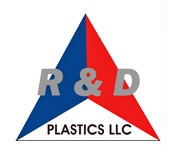The R&D Plastics Process Model
Decrease time-to-market and avoid costly do-overs with our straightforward process model. Starting with the receipt of a Computer Aided Design (CAD) file and ending with the delivery of your product, we'll guide you through our process. View our process model and learn how it works.
The Typical Steps of Our Plastic Injection Molding Jobs
Understanding the Application
Clients should understand all of the application requirements for the part in advance: cosmetic, dimensional, functional and environmental. These requirements guide the part design and the material selection.
Material Selection
Based on the cosmetic, dimensional, functional and environmental requirements, we can assist in selecting the appropriate material. It is important to select the material before designing the part because different materials have different design guidelines.
Part Design and Cad Creation
The most economical and accurate way to build a mold is to design the part in a CAD program, which can be used to program the machines that make the mold. The file can also be used to create prototypes and to better understand the part, visually and functionally. We can help our customers create a CAD file.
Quote on the Mold
Based on the CAD file, we can provide a mold quote. Quoting the appropriate mold design is critical to producing a quality part at the lowest cost. When getting quotes from multiple molders, the customer should check that the quote from each supplier utilizes the same mold quality. We can provide a specification sheet that assists in cross-checking quotes.
Quote on the Part
We can provide a part quote based on anything from a sketch on your dinner napkin to a detailed CAD file, accompanied by a drawing with tolerances and quality specifications. The more detail we receive, the more accurate the quote will be. When getting quotes from multiple molders, the customer should check that the quotes are compared fairly by asking for key assumptions made in the quote. We can provide our key assumptions for comparison purposes.
Prototype Parts
There are several methods of providing prototype parts, from simple machining parts to building a prototype mold. The method depends on how the customer plans to use the prototypes. We can provide the correct prototyping alternative(s) for you.
Down-payment for the mold
Standard practice in the industry is to require a down-payment, which ideally would arrive with the purchase order and final CAD file. Our terms are 50% down, 40% on delivery and 10% on approval. The down-payment covers the costs the moldmaker incurs in the first half of the mold building process. The 40% on delivery protects the moldmaker from a long part approval process by the customer. The 10% on approval protects the customer's interest.
Part Design Review
At this stage, it is desirable to have a meeting with the customer, molder, moldmaker and other appropriate parties (e.g., material supplier and mold texturer). The goal of the meeting is to ensure that the part design is compatible with the proposed mold design. A checklist is covered and a timeline is usually established.
Mold Design Review
This meeting covers the final, detailed mold design. It is preferable to have the customer attend this meeting.
Mold Construction
Often, questions arise during mold construction. The approach to these questions should be determined at the Part Design Review. The answers should be documented and, if necessary, the CAD file should be changed and the drawing updated. On occasion, the customer requests a design change. There may be additional costs incurred and the delivery date might change based on the type of alteration. The next 40% of payment is due upon delivery of the mold.
Testing the Mold
There are many levels of mold testing to verify that the mold can produce a part that meets expectations. We will recommend a level of testing based on how difficult the part will be to mold and the quality expectations of the customer.
Mold Modification
If the customer decides to modify the mold in order to change the part after the first mold test, the final 10% mold payment is due prior to starting the modification. The customer will receive a quote for the modification along with the cost of any additional testing.
Part Approval
At this point, we approve the part for production. The approval should be in written form. The final 10% payment on the mold is due.
Write Quality Standards
Using parts and information collected during the mold testing process, all quality standards need to be established. The Quality Manager writes work instructions for our machine operators and quality inspectors. Quality Control creates a part book that contains these documents.
Customer review of Quality Standards
Our customer's engineering and quality control personnel usually reviews the quality standards before production begins.
Begin Production
The first production order will trigger the installation of the part into our Material Requirements Planning (MRP) system. We establish delivery dates based on material lead times and machine workloads. Frequently, customers send the first production order along with the mold purchase order to eliminate any lead-time issues.
